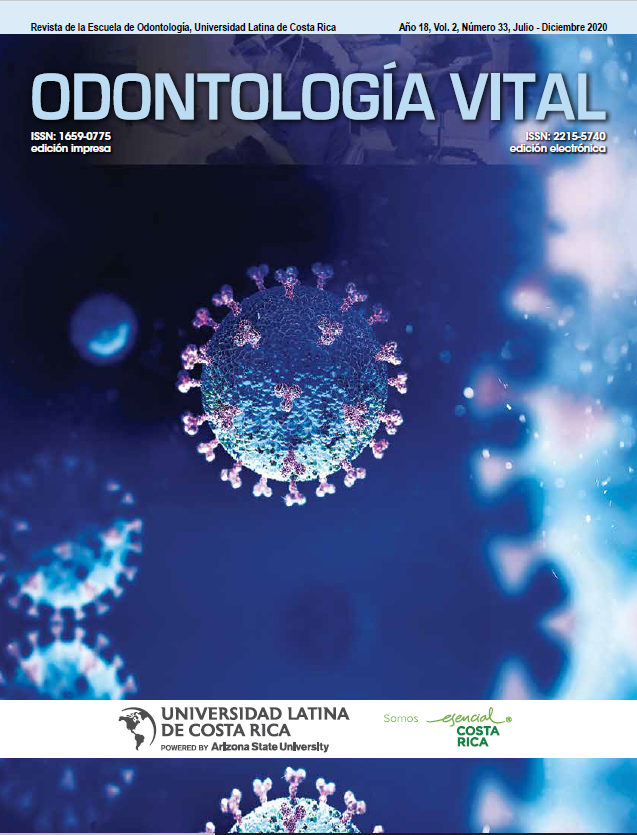Oral manifestations in primary immune thrombocytopenia patients. Case report
DOI:
https://doi.org/10.59334/ROV.v2i33.402Keywords:
Primary immune thrombocytopenia, oral pathology, hematologyAbstract
Introduction: Primary immune thrombocytopenia (ITP) is a disease characterized by accelerated destruction
of platelets or inadequate production of platelets. It can be classified according to its etiology in primary and
secondary. Methods:We present the case of a 30-year-old male patient, who comes to the dental emergency service
of the Barros Luco Hospital, for oral mucosa hemorrhagic lesions and small red spots on the hands, arms and
back, 24 hours of evolution, asymptomatic and without attributable cause. Physical examination corroborates the
presence of multiple hemorrhagic vesicles in the oral region and petechiae in the areas described. A presumptive
diagnosis of ITP is made and confirmed by obtaining a platelet count (RP) of 2000 uL. He is referred to internal
medicine for evaluation and management. The literature describes that confirming this disease requires an
exhaustive medical history, ruling out a previous infectious or systemic pathology, and laboratory tests that
show normal blood cell counts with marked thrombocytopenia. Conclusions:The dentist has a significant role
in multidisciplinary management in this type of condition, where knowledge of oral manifestations of systemic
diseases is of vital importance for the diagnosis, referral and subsequent treatment of these.
Downloads
Published
How to Cite
Issue
Section
License
Copyright (c) 2020 Odontología Vital

This work is licensed under a Creative Commons Attribution 4.0 International License.
Authors who publish with Odontología Vital agree to the following terms:
- Authors retain the copyright and grant Universidad Latina de Costa Rica the right of first publication, with the work simultaneously licensed under a Creative Commons Attribution 4.0 International license (CC BY 4.0) that allows others to share the work with an acknowledgement of the work's authorship and initial publication in this journal.
- Authors are able to enter into separate, additional contractual arrangements for the non-exclusive distribution of the Odontología Vital's published version of the work (e.g., post it to an institutional repository or publish it in a book), with an acknowledgement of its initial publication.
- Authors are permitted and encouraged to post their work online (e.g., in institutional repositories or on their website) prior to and during the submission process, as it can lead to productive exchanges, as well as earlier and greater citation of published work.
Métricas alternativas











